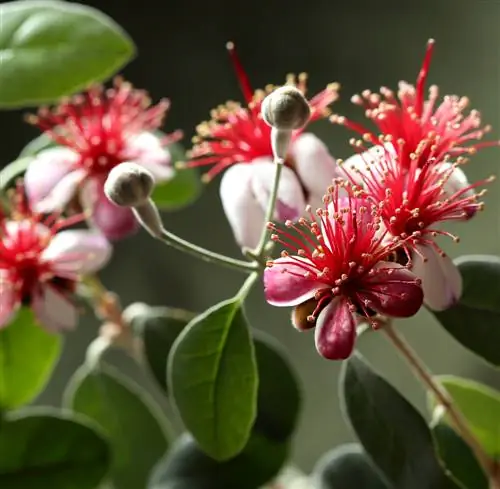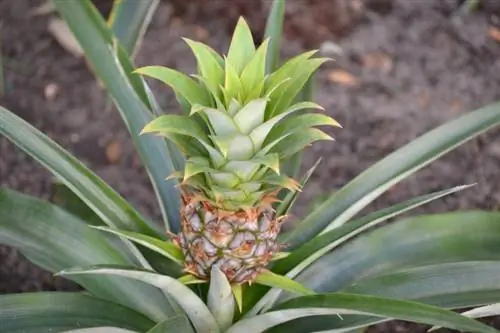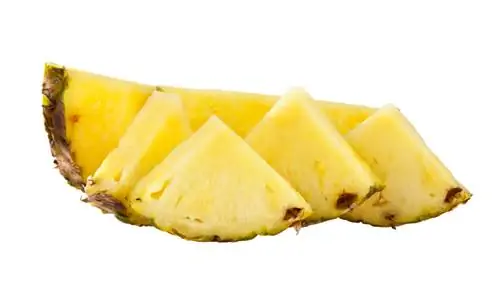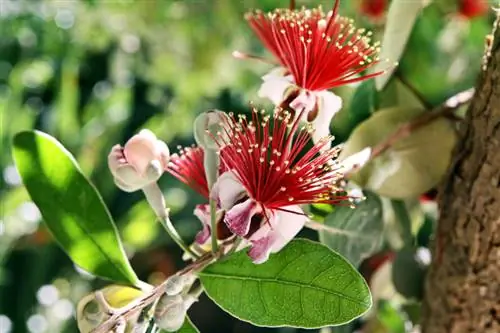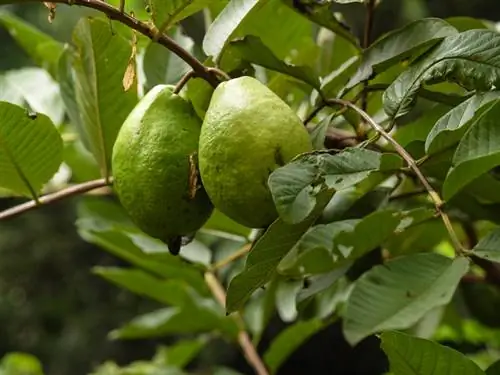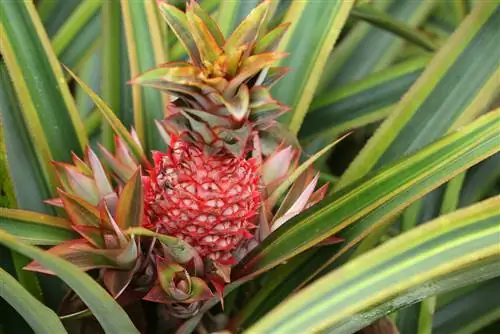- Author admin [email protected].
- Public 2023-12-16 16:46.
- Last modified 2025-01-23 11:21.
The pineapple guava originally comes from South America and is often kept as a decorative and robust house plant in this country. The fruits of this plant, which are similar to kiwis, are considered very tasty, but are hardly to be expected when grown indoors.
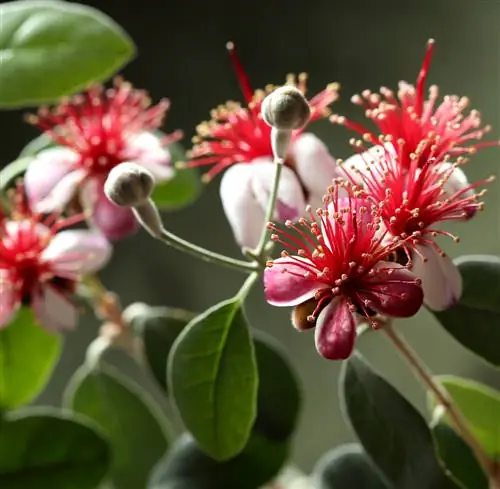
How do I properly care for a pineapple guava?
Caring for the pineapple guava includes a bright, warm location, evenly moist soil without waterlogging, weekly fertilization from May to September and overwintering at 5 °C to 10 °C. To harvest fruit, support pollination with a brush.
Planting the pineapple guava correctly
In summer, the pineapple guava can be grown as a potted plant on the balcony or terrace. No special soil is necessary, normal potting soil is sufficient. In mild climates, you can also plant the pineapple guava in the garden as a fruit tree. You can support pollination with a brush so that you can harvest the aromatic fruits after about six months.
Water and fertilize the pineapple guava properly
Since the pineapple guava comes from subtropical to tropical areas, it prefers a humid climate and moist soil, but does not tolerate very calcareous water. If the pineapple guava is watered too much, it will lose its leaves. Root rot can also be caused by excessive watering. It only needs fertilizer from May to around September. Add a little liquid fertilizer (€6.00 on Amazon) to the water every week.
Cut the pineapple guava properly
Naturally, the pineapple guava develops into a wide-growing shrub or a small tree. With a targeted cut, it can be easily shaped into the desired shape. This makes it easier to transport as a container plant. Older pineapple guavas can definitely be cut back quite heavily.
The pineapple guava in winter
The pineapple guava is sometimes described as hardy, but it can only tolerate frost at just below 0 °C for a short period of time. It hibernates optimally at around 5 °C to 10 °C in a bright winter quarters. An unheated winter garden or a greenhouse are ideal places for this.
The warmer the winter quarters, the more light your pineapple guava needs, otherwise it will lose its leaves. Fertilizer is not necessary in winter, but the soil should still be kept evenly moist. Pests, on the other hand, are hardly to be feared.
The most important things in brief:
- robust and easy to care for
- Location: bright and warm
- Soil should be kept evenly moist
- fertilize: from May to September
- Wintering: ideally at approx. 5 °C to 10 °C
- relatively resistant to pest infestation
Tip
If you want to harvest the aromatic fruits, then pollinate the flowers with a brush.

